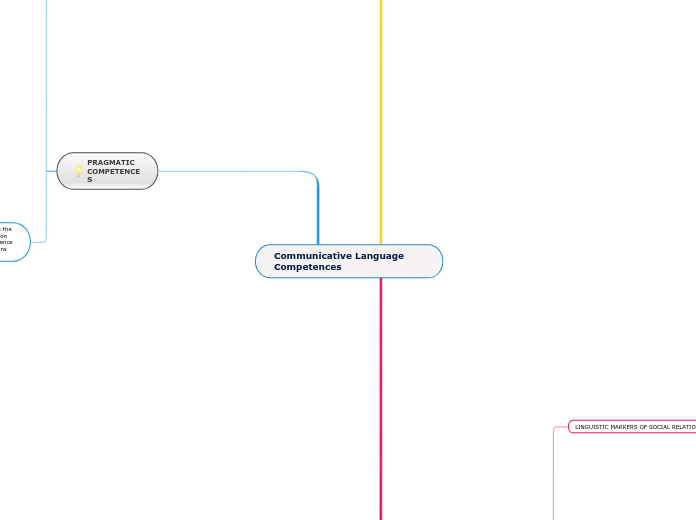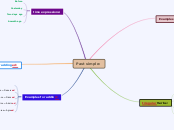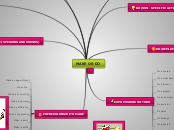Communicative Language Competences
Type in the name of your organization and press Enter.
PRAGMATIC COMPETENCES
Describe the vision and the opportunity that the plan is based on.
The investor's question you answer here is Where are you headed, and why?
Functional competence:This component is concerned with the use of spoken discourse and written texts in communication for particular functional purposes. Conversational competence is not simply a matter of knowing which particular functions are expressed by which language forms
Interaction Schemata
greeting/toast: response
request/offer/apology: acceptance/non-acceptance
statement: agreement/disagreement
question: answer
Macrofunction
• persuasion
• argumentation
• instruction
• demonstration
• explanation
• exegesis
• exposition
• commentary
• narration
• description
Microfunctions
Add a key point about your strategy.
How does this opportunity...
- ... address your current weaknesses and challenges?
- ... exploit your capabilities and strengths, and build new ones?
- ... reduce future threats and competition?
- ... fit it with credible forecasts and trends?
- ... strengthen relationships and reputations?
- ... create value for your customers and investors?
communication repair
structuring discourse:
28 microfunctions, opening, turntaking, closing
socialising
• attracting attention, addressing, greetings, introductions, toasting, leave-taking
suasion:
• suggestions, requests, warnings, advice, encouragement, asking help, invitations, offers
expressing and finding out attitudes
• moral (apologies, approval, regret, sympathy)
• emotions (pleasure/displeasure, likes/dislikes, satisfaction, interest, surprise, hope, disappointment, fear, worry, gratitude)
• volition (wants, desires, intentions, preference)
• modality (obligations, necessity, ability, permission)
• knowledge (knowledge/ignorance, remembering, forgetting, probability, certainty)
• factual (agreement/disagreement)
imparting and seeking factual information
• answering
• asking
• correcting
• reporting
• identifying
Discourse competence:s the ability of a user/learner to arrange sentences in sequence so as to produce coherent stretches of language.
Text design: knowledge of the design conventions in the community concerning, e.g.: how information is structured in realising the various macrofunctions
the ‘co-operative principle’ (Grice 1975): ‘make your contribution such as is required, at the stage at which it occurs, by the accepted purpose or direction of the talk exchange in which you are engaged, by observing the following maxims
Add a key point about the opportunity that you are pursuing.
- What do you plan to do? What product or service will you offer?
- Why does it need doing?
- Why is there a gap in the market?
- Has it been tried before? What happened?
- Why are you best placed to pursue it?
Discourse competence
• ‘natural’ sequencing
• given/new;
• topic/focus;
SOCIOLINGUISTIC COMPETENCE
Dialect and accent
• occupational group
• ethnicity
• national origin
• regional provenance
• social class
Register differences
• intimate, e.g. Ready dear?
• familiar, e.g. O.K. Let’s get going.
• informal, e.g. Right. What about making a start?
• neutral, e.g. Shall we begin?
• formal, e.g. May we now come to order, please.
• frozen, e.g. Pray silence for His Worship the Mayor!
Expretions of folk wisdom
• expressions of: belief, such as – weathersaws, e.g. Fine before seven, rain by eleven attitudes, such as – clichés, e.g. It takes all sorts to make a world values, e.g. It’s not cricket.
• familiar quotations, e.g. a man’s a man for a’ that
• idioms, e.g. a sprat to catch a mackerel
• proverbs, e.g. a stitch in time saves nine
Politeness conventions
Impoliteness
• asserting superiority.
• venting anger, impatience;
• strong complaint and reprimand;
• expressing contempt, dislike;
bluntness, frankness;
Negative
• using hedges, etc. (e.g. ‘ I think’, tag questions, etc.);
• expressing regret, apologising for face-threatening behaviour (correction, contradiction, prohibitions, etc.);
• avoiding face-threatening behaviour (dogmatism, direct orders, etc.);
Positive
• offering gifts, promising future favours, hospitality;
• expressing admiration, affection, gratitude;
• sharing experiences and concerns, ‘troubles talk’;
• showing interest in a person’s well being;
LINGUISTIC MARKERS OF SOCIAL RELATIONS
Use and choice of expletives (e.g. Dear, dear!, My God!, Bloody Hell!, etc.)
Use and choice of address forms
Add some information about the governance of your organization.
- How are you governed and managed?
- Do you have a board of directors?
- Who is accountable to the owners?
- Who takes the key decisions?
frozen, e.g. My Lord, Your Grace
formal, e.g. Sir, Madam, Miss, Dr, Professor (+ surname)
informal, e.g. first name only, such as John! Susan!
informal, e.g. no address form
familiar, e.g. dear, darling; (popular) mate, love
peremptory, e.g. surname only, such as Smith! You (there)!
ritual insult, e.g. you stupid idiot! (often affectionate)
Use and choice of greetings:
What is the legal status of your organization? Are you a sole trader, a limited company with shareholders, or a non-profit?
leave-taking, e.g. Good-bye . . . See you later
introductions, e.g. How do you do?
on arrival, e.g. Hello! Good morning!
LINGUISTIC COMPETENCE
Although the executive summary appears first in the document, it is easier to complete it last, when you can summarise and prioritize the key points in your plan.
Language systems are of great complexity and the language of a large, diversified, advanced society is never completely mastered by anyof its users
Orthoepic competence.
• ability to resolve ambiguity (homonyms, syntactic ambiguities, etc.) in the light of the context
• knowledge of the implications of written forms, particularly punctuation marks, for phrasing and intonation
• ability to consult a dictionary and a knowledge of the conventions used there for the representation of pronunciation
• knowledge of spelling conventions
Orthographic competence;
• logographic signs in common use (e.g. @, &, $, etc.)
• typographical conventions and varieties of font, etc.
• punctuation marks and their conventions of use
• the proper spelling of words, including recognised contracted forms
• the form of letters in printed and cursive forms in both upper and lower case
phonological competence;
• elision.
• assimilation
• strong and weak forms
• vowel reduction
• phonetic reduction
• intonation;
• sentence stress and rhythm
• sentence phonetics (prosody)
• the phonetic composition of words (syllable structure, the sequence of phonemes, word stress, word tones);
• the phonetic features which distinguish phonemes (distinctive features, e.g. voicing, rounding, nasality, plosion);
• the sound-units (phonemes) of the language and their realisation in particular contexts (allophones);
semantic competence;
Grammatical semantics deals with the meaning of grammatical elements, categories, structures and processes (
Lexical semantics deals with questions of word meaning
grammatical competence;
Syntax deals with the organisation of words into sentences in terms of the categories, elements, classes, structures, processes and relations involved, often presented in the form of a set of rules
Morphology deals with the internal organisation of words. Words may be analysed into morphemes
Grammatical competence is the ability to understand and express meaning by producing and recognising well-formed phrases and sentences in accordance with these principles
lexical competence;
Single word forms. A particular single word form may have several distinct meanings
Fixed expressions, consisting of several words, which are used and learnt as wholes.









